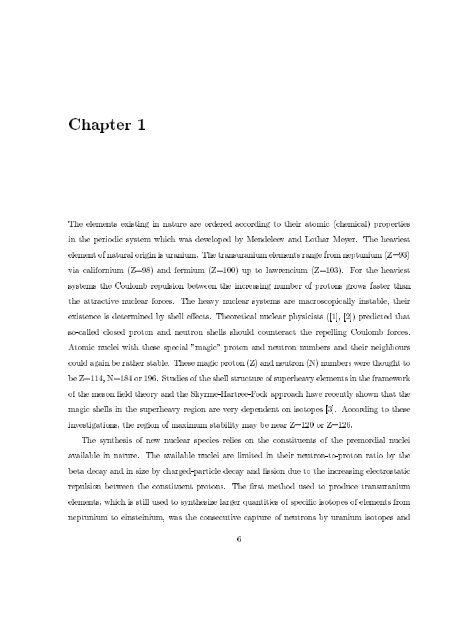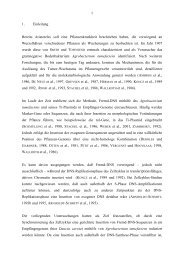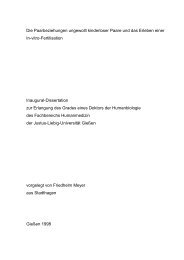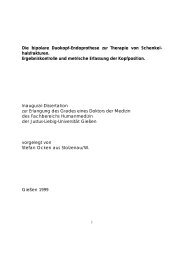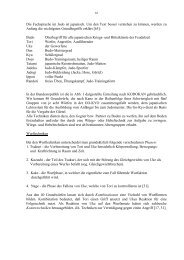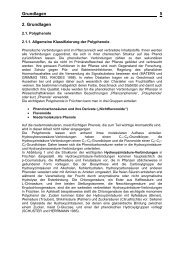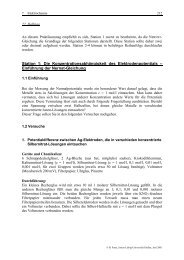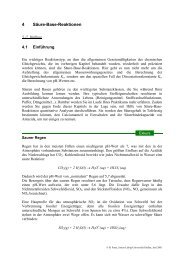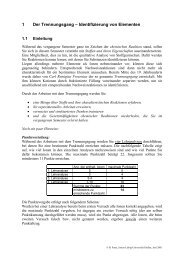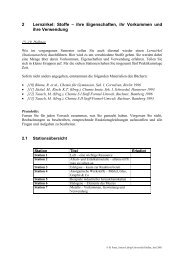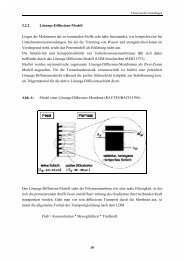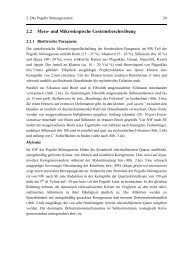Effects of diabaticity on fusion of heavy nuclei in the dinuclear model ...
Effects of diabaticity on fusion of heavy nuclei in the dinuclear model ...
Effects of diabaticity on fusion of heavy nuclei in the dinuclear model ...
You also want an ePaper? Increase the reach of your titles
YUMPU automatically turns print PDFs into web optimized ePapers that Google loves.
Chapter 1<br />
The elements exist<strong>in</strong>g <strong>in</strong> nature are ordered accord<strong>in</strong>g to <strong>the</strong>ir atomic (chemical) properties<br />
<strong>in</strong> <strong>the</strong> periodic system which was developed by Mendeleev and Lothar Meyer. The heaviest<br />
element <str<strong>on</strong>g>of</str<strong>on</strong>g> natural orig<strong>in</strong> is uranium. The transuranium elements range from neptunium (Z=93)<br />
via californium (Z=98) and fermium (Z=100) up to lawrencium (Z=103). For <strong>the</strong> heaviest<br />
systems <strong>the</strong> Coulomb repulsi<strong>on</strong> between <strong>the</strong> <strong>in</strong>creas<strong>in</strong>g number <str<strong>on</strong>g>of</str<strong>on</strong>g> prot<strong>on</strong>s grows faster than<br />
<strong>the</strong> attractive nuclear forces. The <strong>heavy</strong> nuclear systems are macroscopically <strong>in</strong>stable, <strong>the</strong>ir<br />
existence is determ<strong>in</strong>ed by shell effects. Theoretical nuclear physicists ([1], [2]) predicted that<br />
so-called closed prot<strong>on</strong> and neutr<strong>on</strong> shells should counteract <strong>the</strong> repell<strong>in</strong>g Coulomb forces.<br />
Atomic <strong>nuclei</strong> with <strong>the</strong>se special ”magic” prot<strong>on</strong> and neutr<strong>on</strong> numbers and <strong>the</strong>ir neighbours<br />
could aga<strong>in</strong> be ra<strong>the</strong>r stable. These magic prot<strong>on</strong> (Z) and neutr<strong>on</strong> (N) numbers were thought to<br />
be Z=114, N=184 or 196. Studies <str<strong>on</strong>g>of</str<strong>on</strong>g> <strong>the</strong> shell structure <str<strong>on</strong>g>of</str<strong>on</strong>g> super<strong>heavy</strong> elements <strong>in</strong> <strong>the</strong> framework<br />
<str<strong>on</strong>g>of</str<strong>on</strong>g> <strong>the</strong> mes<strong>on</strong> field <strong>the</strong>ory and <strong>the</strong> Skyrme-Hartree-Fock approach have recently shown that <strong>the</strong><br />
magic shells <strong>in</strong> <strong>the</strong> super<strong>heavy</strong> regi<strong>on</strong> are very dependent <strong>on</strong> isotopes [3]. Accord<strong>in</strong>g to <strong>the</strong>se<br />
<strong>in</strong>vestigati<strong>on</strong>s, <strong>the</strong> regi<strong>on</strong> <str<strong>on</strong>g>of</str<strong>on</strong>g> maximum stability may be near Z=120 or Z=126.<br />
The syn<strong>the</strong>sis <str<strong>on</strong>g>of</str<strong>on</strong>g> new nuclear species relies <strong>on</strong> <strong>the</strong> c<strong>on</strong>stituents <str<strong>on</strong>g>of</str<strong>on</strong>g> <strong>the</strong> premordial <strong>nuclei</strong><br />
available <strong>in</strong> nature. The available <strong>nuclei</strong> are limited <strong>in</strong> <strong>the</strong>ir neutr<strong>on</strong>-to-prot<strong>on</strong> ratio by <strong>the</strong><br />
beta decay and <strong>in</strong> size by charged-particle decay and fissi<strong>on</strong> due to <strong>the</strong> <strong>in</strong>creas<strong>in</strong>g electrostatic<br />
repulsi<strong>on</strong> between <strong>the</strong> c<strong>on</strong>stituent prot<strong>on</strong>s. The first method used to produce transuranium<br />
elements, which is still used to syn<strong>the</strong>size larger quantities <str<strong>on</strong>g>of</str<strong>on</strong>g> specific isotopes <str<strong>on</strong>g>of</str<strong>on</strong>g> elements from<br />
neptunium to e<strong>in</strong>ste<strong>in</strong>ium, was <strong>the</strong> c<strong>on</strong>secutive capture <str<strong>on</strong>g>of</str<strong>on</strong>g> neutr<strong>on</strong>s by uranium isotopes and<br />
6


